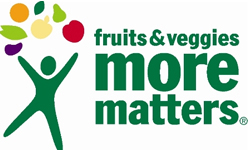More Matters
 In class a couple of weeks ago, we were talking about why certain public health initiatives fail. It was interesting, because before we actually discussed the topic in any great detail, my professor sent us on a mini field trip. He told half of the class to go to the Roxbury area and the other half were told to go to the South End (my school is between Roxbury and the South End in Boston). Everyone was told to buy a head of lettuce, an apple, an orange, and a banana.
In class a couple of weeks ago, we were talking about why certain public health initiatives fail. It was interesting, because before we actually discussed the topic in any great detail, my professor sent us on a mini field trip. He told half of the class to go to the Roxbury area and the other half were told to go to the South End (my school is between Roxbury and the South End in Boston). Everyone was told to buy a head of lettuce, an apple, an orange, and a banana.
It turns out that some people assigned to the Roxbury area had a harder time finding all of the items compared to the people in the South End area. If they did find the items, they were of poorer quality. So, our professor basically wanted us to see that there’s an uneven distribution of produce across the different neighborhoods. The point of the exercise was this: it’s hard to expect people to follow the “Fruits & Veggies—More Matters®” campaign when buying healthy food is difficult.
Public health practitioners and health care providers are always emphasizing the importance of eating healthfully, but they often forget to look at the context of how these daily decisions are made and the possible reasons why some people don’t follow their advice. Some communities have food pantries, which are a great resource for some families, but not everyone is eligible.
As a community, it’s important that we try to do something about the uneven distribution of quality food. People deserve to enjoy good health, regardless of their socioeconomic status. It’s simply not fair that some neighborhoods get a lot healthier and better quality produce. However, don’t let distance stop you from enjoying fresh, healthy food. Just as you may go out of your way to shop for clothes or other things out of your immediate neighborhood, consider doing the same for something that will benefit your health.
-Erica

